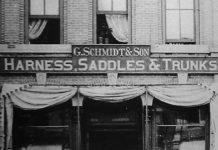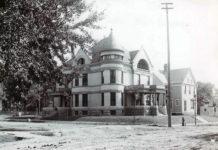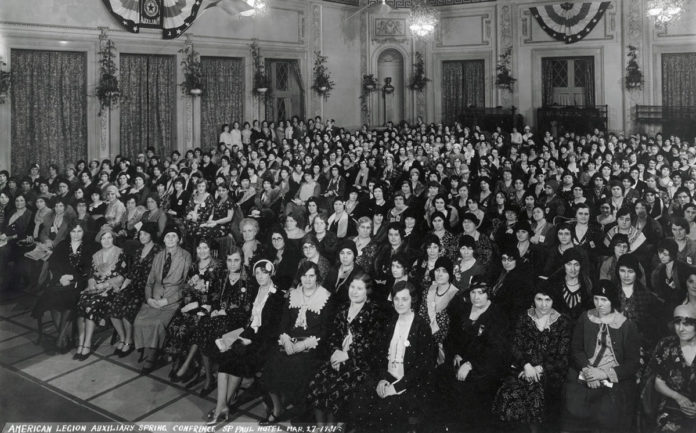
[Featured Image – Photo Courtesy of the Minnesota American Legion Archives – American Legion Auxiliary spring conference at the St. Paul Hotel March 27, 1931.]
Over fifty years ago, on a sunny Sunday afternoon in July, members of the Lorentz Post 11 American Legion Auxiliary gathered to dedicate a memorial to Dr. Helen Hughes Hielscher in Mankato’s Tourtellotte Park.
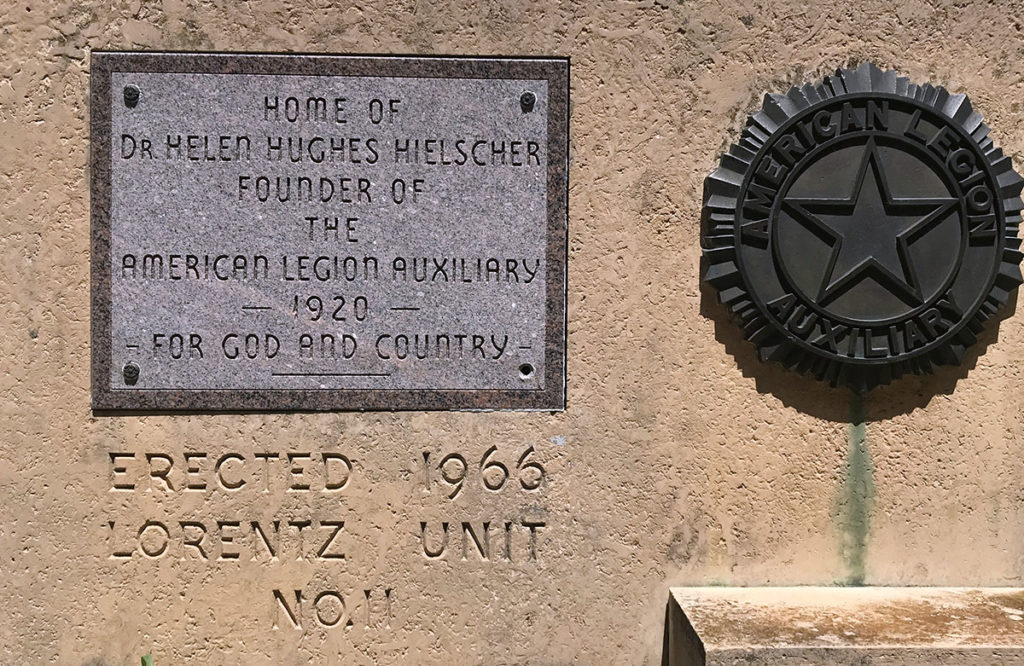
Mrs. Frank Morse from the Auxiliary spoke at the dedication, “In her early years, we could say she [Dr. Helen Hughes Hielscher] was a pioneer woman doctor. Dr. Helen was intensely interested in public health and was one of the leaders in making Blue Earth County one of the first to have the county nursing program.”
Dr. Helen Hielscher was a trailblazer. She was one of Minnesota’s first female surgeons, the first female doctor in Mankato, the first woman to serve on the state board of health, and one of Minnesota’s leading women. She overcame the antipathy toward women in the profession that characterized the period. Helen was the originator of Poppy Day, which continues to be observed throughout America today.
Coming to Mankato
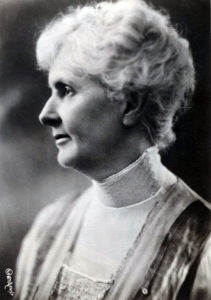
Helen was born in January 1863 on a farm on Prince Edward Island, Canada, where she grew up and was educated. She was one of ten children born to Patrick and Bridget Hughes. She immigrated to the U.S. and in 1892 attended medical school at the University of Michigan in Ann Arbor. Her last year was spent at the University of Minnesota where she received her medical degree in 1896.
Helen practiced medicine for two years in Blue Earth, Minnesota where her brother Robert was serving as a Catholic priest. Later, she took a postgraduate course and then spent a year in Europe, studying at various medical centers.
In 1900, she started a medical practice in Mankato, where her brother Daniel was a priest at St. John the Baptist Catholic Church. Her sister, Jane Hughes also came to Mankato after graduating from medical school at the University of Minnesota in 1902.
Dr. Helen Hielscher was a trailblazer. She was one of Minnesota’s first female surgeons, the first female doctor in Mankato
Doctors Helen and Jane founded the Mankato Maternity Hospital on the eastern edge of town in 1905. The maternity hospital had capacity for 15 women. After only a little over a year in operation, the hospital closed when a maternity department was added to St. Joseph’s Hospital. The sisters continued practicing medicine for several years.
World War I
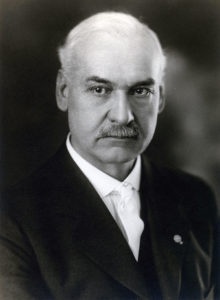
Dr. Helen, as she was known, married Dr. Julius A. Hielscher in Mankato on May 2, 1910. The couple practiced medicine together until Julius enlisted in the Medical corps of the U.S. Army when the first World War broke out.
During the war Helen continued their medical practice and was the chairman for home service county work for the Red Cross. Dr. Julius served eighteen months in France and returned with the rank of major.
Through her husband, Helen was aware of the heartbreaking condition of the returning wounded and she began visiting soldiers in various hospitals in the Twin Cities and across the state. Although committed to her profession, Helen made the decision to give up private practice when her husband returned home so she could devote her time to rehabilitating wounded soldiers. She recognized the needs of the thousands of young men returning from France and understood these needs were more than hospitalization. Out of that understanding, the American Legion Auxiliary was born.
Birth of the American Legion Auxiliary
On December 2, 1919, a 56-year-old Helen organized a group of mothers, wives and daughters of American Legion members in Mankato, and later at the Town and Country Club in St. Paul, to consider forming an auxiliary. After the initial meetings, Helen approached the state American Legion headquarters, proposing that if 100 groups similar to the one she formed in Mankato were organized, the state Legion would allow the auxiliary to be a department of the organization “for the purpose of relieving the distress among the disabled.”
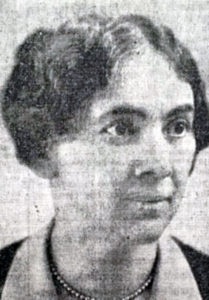
Dr. Julius A. Hielscher, Helen’s husband, was a member of the Cleveland national convention committee on the auxiliary, and he and Department Commander Archie Vernon, as well as other Minnesota delegates, worked hard for the Minnesota cause. The Auxiliary position was won by Commander Vernon and he immediately began preparing for a convention of the auxiliary units. At the time auxiliary units numbered about 100.
The first American Legion Auxiliary [ALA] convention was held at the Curtis Hotel, Nov. 18-19, 1920 in Minneapolis and was the first in the nation. Dr. Helen was unanimously elected to serve as the first national director of the ALA.
Dr. J.A. Hielscher addressed the ALA convention and joked saying, “Undoubtedly all of you ladies present have noticed often in the back part of the daily papers the series of cartoons called “Bringing up Father,” where they depict the unfortunate situations in which Mr. Jiggs is placed at the hands of his loving spouse Maggie. Before leaving for the [national] convention my loving spouse took me to the depot and before we parted she informed me that if I returned from the convention and they didn’t do something regarding the Women’s Auxiliary, the reception which would be accorded upon my return would be equal to that usually accorded to Jiggs by his loving spouse Maggie. That may account to some extent for the Resolutions placed before the convention and which were finally adopted in your favor.”
A Growing Endeavor
After the ALA convention, headquarters were set up immediately in Mankato and for six months women answered letters from other women seeking to organize in other states across the country. The organization paid ten dollars a month for two small rooms and used borrowed furniture. Helen wrote, “Letters poured in from units about to organize or those already organized asking for information. In fact, some of them wanted literature not knowing that we had to make our own literature.”
Meanwhile the women visited the wounded veterans of war and found many of them out of money and in need of clothes and other necessities. The women raised money and held clothing drives for the veterans. At this time the Minnesota auxiliary already had 7,000 members.
Hospital visitation became the major program of the Auxiliary the first year following the war when there were no government hospitals to care for the sick and disabled. These men had been housed wherever room could be found, in the basements of city hospitals, in jails, in county poor houses and even in insane asylums. Many were destitute and forgotten. It was the Auxiliary that stepped in to help these soldiers.
“We found that in 1920 and 1921 hardly any of them [soldiers] were receiving compensation. They often were in rags and few had the little accessories that belong to a decent living. It would be impossible to tell in dollars how much we spent in comforts such as pajamas, shoes, socks, etc., but I am very well convinced that our best work was done in breaking down the wall that shut away the outer world, and trust in the government which very many of them had lost trust,” wrote Helen.
In the first bulletin issued from Headquarters of the American Legion Auxiliary, Helen wrote, “That chapter of our life was not closed when those who remained of our men returned from the red wine press of ’17 and ’18 and it will not be closed until the last sick and disabled soldier has all the aid that medical and surgical skill and kindly nursing can give him, and all service men have a square deal from the country for which they put their life in jeopardy.”

Dr. Helen presided over the first annual national ALA convention held in Kansas City in the fall of 1921. More than 180,000 women, members of 3,500 units were represented and the auxiliary had been organized in thirty states, with Minnesota having been the first to establish a department headquarters when it elected Dr. Helen Hughes Hielscher of Minnesota state president in 1920.
As chairman of the first national convention, Helen told the audience, “There never was a group of women whose opinion should have more weight before the lawmakers of the country than the Women’s Auxiliary of the American Legion. They know the tragedy of war from the day when its first whisper made them look anxiously at their growing sons, to the day when the yellow envelope brought the chill of death in their homes and their hearts. They know it from the day that their boy, ruddy in the morning bloom of manhood kissed them goodbye at the railway depot, till the day that they received his pale, sickly form again in their arms. “
Dr. Helen also served as the auxiliary’s national chairman of rehabilitation under two administrations. In 1921 the University of Minnesota School of Agriculture began a Farm Colony program to train veterans in agriculture and help them establish farms. The first Farm Colony established was known as Veteransville in Aitkin County.
Farm colonies were later established in other parts of Minnesota including one near Mankato. As ALA rehabilitation chairman, Dr. Helen visited the colonies, sometimes making her journey on horseback. She discovered that trainees had no money to invest in livestock and farm equipment. After hearing her report at the ALA convention, it was voted to establish a revolving fund from which loans could be made to colony trainees. By 1923, the Farm Colony program was retitled “Rural Action.” Unfortunately, the program was not successful and was discontinued in 1937.
Poppy Day is Founded
During her many visits to veterans hospitals across the nation, Dr. Helen saw that the ex-soldiers needed something to occupy their time and to provide physical therapy. Many veterans were unemployed after leaving the hospitals.
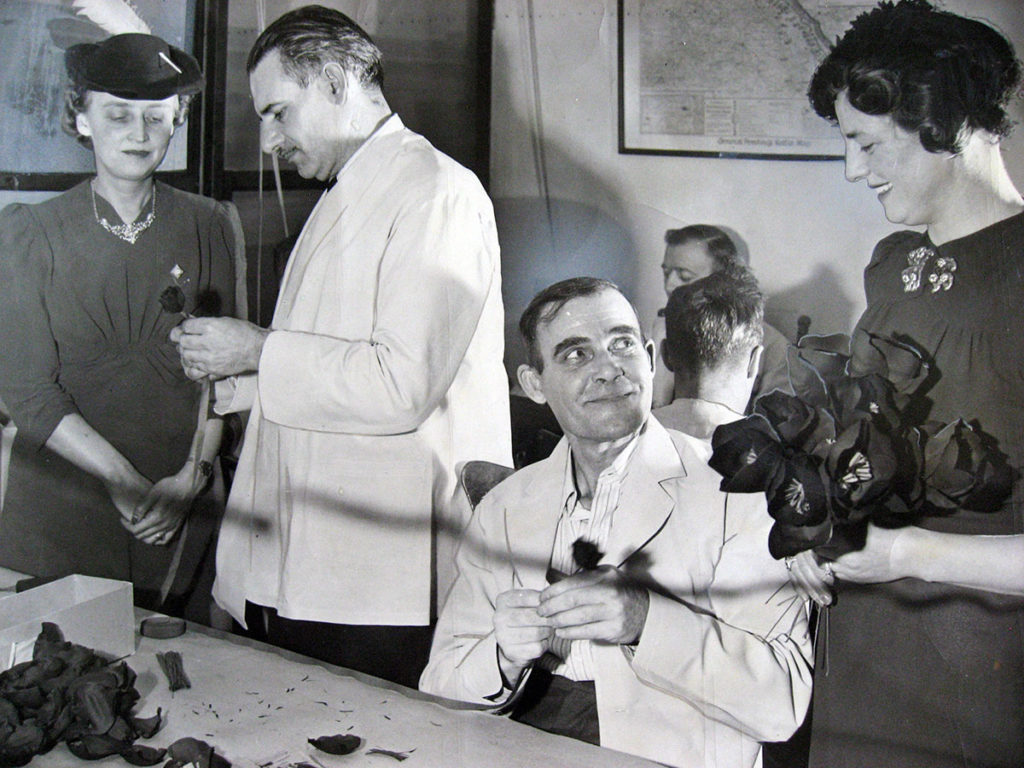
Dr. Helen introduced the idea of having disabled veterans make paper poppies to be sold to raise money. Helen reported that “Poppies are being made in Minnesota by the disabled who were otherwise destitute. Many of them are making as much as $3 per day, and the effect of the knowledge that they are again wage earners was of great benefit to them psychologically. The poppy program is better developed here [in Minnesota] than any other state and has contributed hundreds of thousands of dollars to the Rehabilitation of our Disabled.”
The poppies are made of red crepe paper, by hand, by disabled veterans in hospitals and in poppy workrooms in forty states. Workers are paid for each poppy made. The materials are supplied free by the Department in the state in which the hospital is located. Seven and a half million poppies were sold in 1923. Reporting sales from Minnesota units during the 2019/2020 season are: 131,552 poppies distributed and $284,595 collected in donations.
Significance of the Poppy
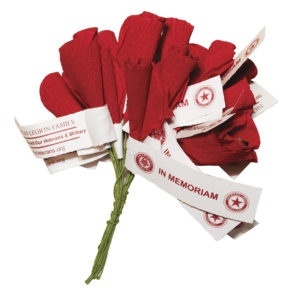
In the spring of 1919, amidst complete devastation, poppies bloomed in abundance on the battlefields of France where so many of our men had fallen. The American Legion adopted the poppy as its Memorial Flower in 1920. At the 1921 ALA national convention, it was resolved that Memorial Day as National Poppy Day and all proceeds be kept for the express purpose to benefit the sick and disabled soldiers. These poppies were sold on Memorial Day and this tradition continues today.
Dr. Helen was appointed the first woman to the Minnesota State Board of Health in 1932. Through the board of health, she established the Blue Earth County Welfare Association, and worked to have a nurse in every county in the state. She started cooking schools that included nutrition lessons for “undertrained and under-nourished mothers.” A sewing school and preschool activity were developed by Dr. Helen in conjunction with the cooking classes.
A forceful, logical speaker, Helen was endowed with fine literary tastes, including reading German, French and Latin literature. She wrote poetry, short stories and articles for magazines. She authored the book Songs Of The Son Of Isai: A Metrical Arrangement Of The Psalms Of David that was published in 1916. Miscellaneous Poems of Helen Hughes Hielscher was published in 1936. One of her poems, “My Minnesota” was set to music to the tune of “America” and sung at the 1921 ALA convention in Winona. She was also an active sponsor of the work of several Catholic organizations.
Helen Hughes Hielscher died May 31, 1935 at St. Joseph’s Hospital in Mankato after suffering from bronchial pneumonia. She is buried in Calvary Cemetery in Mankato.
Sources:
- National American Legion Auxiliary archives and Cathi Taylor
- Minnesota American Legion Auxiliary archives and Karla Otterness
- American Legion Lorentz Post 11 and James Olson
- “Legion 50: The American Legion, the American Legion Auxiliary, and the and 8 in Minnesota 1919-1969” by Ben Grimmestad
- “The Heritage of Blue Earth County, MN 1990” compiled by Julie Schrader
- Blue Earth County Historical Society
- Various newspaper articles.


